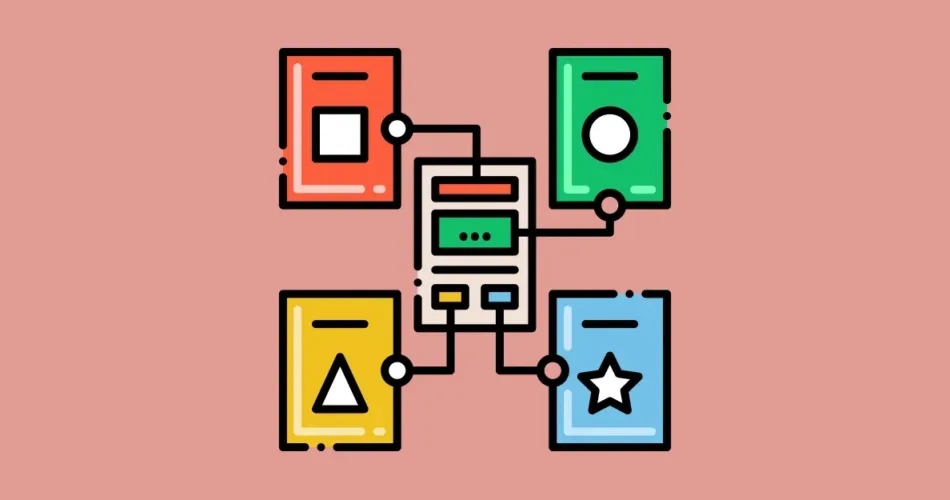The Prototype design pattern is a creational pattern that allows objects to be copied or cloned to create new instances. Rather than relying on costly object initialization processes, the Prototype pattern utilizes prototypical instances as templates for creating new objects. This pattern promotes flexibility, reduces duplication, and improves performance.
Key Components of the Prototype Pattern
- Prototype: This defines the interface or abstract class that declares the clone method, which allows objects to be cloned.
- Concrete Prototype: These are the specific implementations of the Prototype interface or class, providing the cloning behavior.
- Client: The client is responsible for creating new objects by cloning existing prototypes.
Example: Applying the Prototype Pattern to Building Design: Let’s consider a scenario where we need to design different types of buildings, such as houses, offices, and warehouses. We will create a Building interface as the Prototype, Concrete Building classes as the Concrete Prototypes, and a BuildingRegistry class as the Client.
import java.util.HashMap;
import java.util.Map;
interface Building extends Cloneable {
void construct();
void display();
Building clone();
}
class House implements Building {
@Override
public void construct() {
System.out.println("Constructing a house...");
// Construction logic specific to houses
}
@Override
public void display() {
System.out.println("This is a house.");
}
@Override
public Building clone() {
try {
return (Building) super.clone();
} catch (CloneNotSupportedException e) {
return null;
}
}
}
// Similar classes for Office and Warehouse implementing the Building interface
class BuildingRegistry {
private Map<String, Building> buildingMap;
public BuildingRegistry() {
buildingMap = new HashMap<>();
initializePrototypes();
}
private void initializePrototypes() {
House house = new House();
buildingMap.put("house", house);
Office office = new Office();
buildingMap.put("office", office);
Warehouse warehouse = new Warehouse();
buildingMap.put("warehouse", warehouse);
}
public Building createBuilding(String type) {
Building prototype = buildingMap.get(type);
if (prototype != null) {
return prototype.clone();
}
return null;
}
}
In the above example, the Building interface serves as the Prototype, defining the common operations for constructing and displaying a building. The House, Office, and Warehouse classes implement this interface and provide specific implementations for construction and display. Each Concrete Prototype class overrides the clone() method to create a deep copy of itself.
The BuildingRegistry class acts as the Client, responsible for maintaining a registry of prototypes and creating new buildings by cloning the prototypes. It initializes the prototypes in the buildingMap and provides a createBuilding() method to create new instances by cloning the appropriate prototype.
Let’s create different buildings using the BuildingRegistry:
BuildingRegistry buildingRegistry = new BuildingRegistry();
Building house = buildingRegistry.createBuilding("house");
house.construct();
house.display();
Building office = buildingRegistry.createBuilding("office");
office.construct();
office.display();
Building warehouse = buildingRegistry.createBuilding("warehouse");
warehouse.construct();
warehouse.display();
In this code snippet, we utilize the BuildingRegistry to create different types of buildings by cloning the appropriate prototypes. The registry ensures that the prototypes are initialized and ready for cloning, providing a convenient and efficient way to create new building instances.
Benefits and Use Cases of the Prototype Design Pattern
The Prototype design pattern offers several benefits:
- Flexibility and Creativity: The Prototype pattern allows for dynamic object creation by cloning existing instances. It provides the flexibility to create new objects with customized properties while leveraging the structure and behavior of the prototypes.
- Reduced Object Initialization Costs: By avoiding complex initialization processes and creating objects through cloning, the Prototype pattern reduces the overhead associated with object creation. This can lead to improved performance, especially when creating multiple similar objects.
- Object Variation and Customization: The Prototype pattern facilitates the creation of object variations by modifying cloned instances. It enables the customization of objects without altering the original prototypes, promoting code reusability and maintainability.
- Simplified Object Creation and Management: The Prototype pattern simplifies the process of object creation and management by providing a centralized registry or factory for prototypes. It abstracts the complexities of object creation, making it easier to handle object instantiation in a consistent and organized manner.
The Prototype pattern finds use in various scenarios, including:
- Dynamic Object Generation: When objects need to be created dynamically at runtime, the Prototype pattern offers a convenient way to clone existing instances, eliminating the need for complex construction logic.
- Stateful Object Creation: If objects maintain internal states that need to be preserved during cloning, the Prototype pattern allows for deep copies of the prototypes, ensuring that the state is correctly transferred to the new objects.
- Prototype Registries or Factories: The Prototype pattern can be used to maintain registries or factories of prototypes, providing a centralized location for managing and creating objects based on different requirements or user inputs.
Conclusion
The Prototype design pattern offers a powerful approach to object creation, promoting flexibility, efficiency, and creativity in building design and various other contexts. By utilizing the cloning mechanism, the Prototype pattern allows for the creation of new objects by leveraging existing prototypes, minimizing the need for complex initialization logic.
In this blog post, we explored the Prototype pattern using building design as an example. We demonstrated how Concrete Prototypes can be cloned to create new instances and how the Prototype pattern simplifies object creation and customization. By harnessing the benefits of the Prototype pattern, software engineers can enhance code reusability, improve performance, and achieve greater flexibility in their projects.
By adopting the Prototype pattern, you can unlock a world of creativity and efficiency in object creation, enabling the design and construction of diverse and dynamic buildings with ease.
Subscribe to our email newsletter to get the latest posts delivered right to your email.


Comments